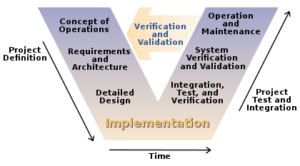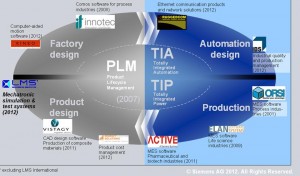Siemens’s acquisition of LMS International demonstrates the commitment of the PLM group to integrating tools for design through production. With its own manufacturing as well as design, simulation, and data management Siemens AG has more puzzle pieces than the PLM competitors.
It was a busy morning in the Siemens universe and that universe is growing just a little bit larger thanks to the Siemens PLM division. Siemens PLM has announced the acquisition of LMS International of Leuven, Belgium. In a phone call with press and analysts, Siemens PLM CEO Chuck Grindstaff said the acquisition is complementary to recent deals made by the company including the acquisition of Vistagy, which gave Siemens PLM more expertise in simulation for the aeronautics industry. He also mentioned the Perfect Costing Solutions acquisition, and KineoCAM for robotic planning in factories. The point is that these tools strengthen the links between the digital world and the physical world where the products being designed in Siemens PLM tools are going to live, operate, and be sold.
This is an industry-wide dream. Chuck Grindstaff’s point as he talked about this acquisition is that it’s not a dream. There are tools making these links, LMS International has them, Siemens has them, and they’re going to be building systems that can do more in linking the real world and the physical world.

Ironically, at the same time Chuck Grindstaff and LMS founder and CEO Urbain Vandeurzen were talking about the acquisition, the Siemens mother ship was holding an investor call and addressing ways the company plans to ensure profitability. Siemens AG CEO Peter Loescher announced a plan to save 6 billion euros. The first steps announced were to sell water-treatment assets, and earlier, in October 2012, Siemens announced plans to dispose of its solar operations and focus on wind and hydro instead. Siemens’ wind division tool orders of €2.3 billion. In describing the company’s efforts to improve efficiency, Loescher said, “we will be extremely strict when allocating capital.”
All of which points up the positive attitude around the LMS deal. This is in line with the larger Siemens worldview as well as with Siemens PLM. Grindstaff said that Siemens PLM and LMS have been talking about this deal for over two years. Grindstaff said the talks were not “driven by an acute situation,” but there were obvious advantages to a partnership. The two companies spent a great deal of time, he said, in assessing whether they’d be better as strategic partners or unified. Grindstaff says that as they worked through these questions, “we fell more in love.”
LMS and Siemens PLM have collaborated on deals for LMS Virtual.lab and NX Nastran solver. Interestingly enough, at least to the niggly journalistic mind, LMS has products built on Dassault’s Catia V5 product.
How does that work? Those deals will be respected and supported, says Grindstaff. As Vandeurzen notes, the deals are material to LMS International, and account for, “not the Lion’s share,” but around 10-15% of LMS’ business. Grindstaff said that the situation is not that different from some of the overlap seen in the Vistagy acquisition. Both Vandeurzen and Grindstaff said they are committed to an open culture for design systems products. But, he said, it’s reasonable to expect to see new products developed for Siemens NX as well.

Real world considerations
The two companies share important customers including BMW, Canon, Daimler, Fiat, Ford, GE, GM, Voith, United Aircraft and more. LMS’ customer base is situated strongly in the automotive and aeronautics industry. LMS claims the largest market share in the mechatronics simulation and test. The companies products enable a round trip loop between design and simulation with real-world performance using live measurement tools, and in fact, the company’s original name was Leuven Measurement Systems. The company has been has been building its portfolio to include more simulation and design tools and now claims to be the leader for modeling and simulating intelligent systems in cars, airplanes, and other complex mechanical products. Actually, now Siemens is claiming that distinction. With this acquisition, Siemens says they will be able to put together a value proposition that no one else can offer – the ability to tie together the digital and the physical.

The obvious question is how will Siemens integrate the LMS International into the Siemens PLM organization. Grindstaff says “we restructured PLM well over a year ago with an eye to acquisition.” The company has enabled groups within PLM to operate as separate profit and loss (P&L) centers within the company. As a result LMS International will be able to be slotted in as a separate P&L. Siemens PLM integrates the different groups through the offices of the CTO and Industry Planning. In other words, this is just the sort of thing Grindstaff and company has been planning.
Our take
This deal is emblematic of the challenges facing design, development, and art. Humans have lived long enough in the digital world at the expense of the real world.
Once upon a time, we had the dubious pleasure being in a very large boat driven by two very young engineers who were fighting over the controls. One insisted on steering by the digital GPS screen while the other (and all of us watching) were screaming for the guy to look up at the real world coming towards him way too fast. That’s where we are now. The industry needs to build better ways to take advantage of the power in the digital world but be able to drive in the real world. – K.M.





